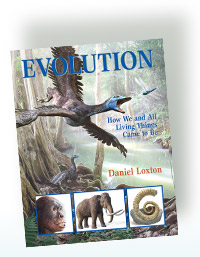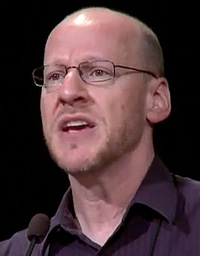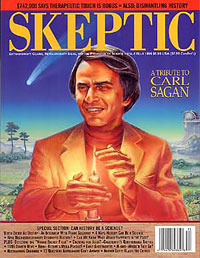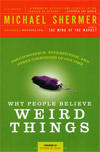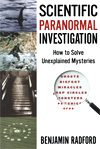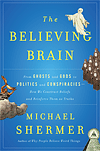In this week’s eSkeptic:
Daniel Loxton’s Evolution nominated
for national literary prize
We’re proud to announce that the Junior Skeptic-based Evolution—How We and All Living Things Came to Be is a finalist for a top national honor from the Canadian Children’s Book Centre. Winners will be announced at an invitation-only gala event in Toronto on October 4, 2011.
Exclusively a non-fiction prize, “the Norma Fleck Award is the largest of its kind in Canadian children’s books and is considered to be one of Canada’s most prestigious literary prizes.” The award jury hails Evolution as “A first of its kind… A beautiful book.”
Packed with full-color illustrations (by Daniel Loxton with Jim WW Smith) Evolution is available from the Skeptic Store and all major booksellers.
Science Symposium starts this Friday!
Due to popular demand more seats are now available as we have moved to a larger hall for our Science Symposium this weekend. Don’t miss this rare opportunity to hear four of the world’s leading Skeptics discuss their experiences fighting irrationality and promoting science (and what you can do to help)!
About this week’s feature article
In this week’s eSkeptic, we delve into the question of the right approach to dealing with people who believe in the paranormal or some particular idea we could call pseudoscience. Naturally no one considers their beliefs to be pseudoscience or faith-based nonsense, so saying something along those lines to a believer’s face is likely to close off conversation. In this remarkable article, our own Daniel Loxton tackles the matter head on. Daniel shows that a controversy that erupted at last year’s The Amazing Meeting conference was just the latest in a very long history of skeptical debates about the “tone” of our criticism and educational outreach. (Please note: this is a long article, running over 4500 words.) —Michael Shermer, Editor in Chief
Daniel Loxton is the Editor of Junior Skeptic (the 10-page kids’ science section bound within Skeptic magazine), a skeptical investigator, and an acclaimed writer and illustrator of science and skepticism material for kids. He is the author of the Norma Fleck Award-nominated Evolution (Kids Can Press, 2010). His next children’s book is scheduled for September, 2011.
SUBSCRIBE to Skeptic magazine for more great articles like this one.
Skepticism’s Oldest Debate
A Prehistory of “DBAD”: 1838–2010
by Daniel Loxton
“The Amazing Meeting 9” conference—organized skepticism’s biggest, broadest, and most important meeting of the minds—is almost upon us. It seems a good moment to look back at the most widely discussed presentation at last year’s TAM: astronomer Phil Plait’s “Don’t be a Dick” speech (video) calling for less name-calling1 and more civility in skeptical outreach:
The best idea ever thought of in the history of humanity is useless unless someone communicates it. It will die in the test tube. And in our case, what we’re communicating here to people is not necessarily something they want to hear. And so, our demeanor—how we deliver this message—takes on crucial, crucial importance.
As some readers may know, Plait’s “DBAD” speech touched off an online firestorm that smolders to this day.
I explore the ethics of skepticism quite often2 (it’s one of the main reasons I blog in addition to writing books and Skeptic magazine articles) but today I’d like to look at something simpler and more concrete. Let’s explore a straightforward historical question:
Was Plait’s call for civility something new for skepticism?
It happens that the answer is, “No, not even a little bit.”
Skepticism’s Oldest Internal Debate
Immediately after Plait’s speech, I began to hear suggestions that it was really a veiled attempt to protect religion, and might even have been related to some then-recent controversies over in the atheist world (controversies I won’t even pretend to be able to follow).
But similar calls for a kinder, more careful skepticism predate the atheist blogosphere by almost two hundred years (as we’ll see) and probably much more. They’re about science-based skepticism—and during the 1980s and 1990s, they were a dominant thread in defining what we do.
Why are calls to greater civility so persistent? It’s an inevitable consequence of the tension between two of skepticism’s fundamental roles: criticism (which is inherently confrontational, to at least some degree) and educational outreach (which must, by its nature, reach out). The result is that calls for “More action! take the gloves off!” have always alternated with calls for a more empathetic and objective-conscious approach.
But let’s leave “why” analysis for another day. For now, it’s enough to look back at a small selection of skepticism’s centuries of discussions about the “tone” of what we do.
Before we start, I might note in passing that I’ve been beating the civility drum myself for years. (For recent examples, consider my 2009 discussion about civility with Maria Walters and MonsterTalk‘s Blake Smith on the Skepchick podcast, or the “Don’t Call People Names” section of my What Do I Do Next? activism panel PDF. Those were hard-won lessons from my work critiquing cryptozoology and paranormal claims, and had nothing to do with religion.)
But you already knew I promote this stuff. Let’s look at what others have said.
Do note that this is no sense an exhaustive literature review. These are just the first few examples that came to mind. Even at that, I’m passing right by most of the recent work related to this theme, including such offerings as Rebecca Watson’s 2010 “Don’t Be a Dick: Etiquette for Atheists and Skeptics” presentation (in which she urged, “Do whatever it takes to recognize that the person you’re talking to is a human”) and the short-lived podcast Actually Speaking (which aimed to explore “the Human Side of Skepticism”). As well, note that this is explicitly intended as an introduction to one prominent school of thought within scientific skepticism; the other side of the pendulum will have to wait for another post. Finally, note that I am leaving aside similar discussions within many other spheres (such as atheism, politics, online gaming, and the wider blogosphere).
Skeptical Appeals to Civility Before DBAD
2010
The most amusingly exact “Don’t Be a Dick” parallel must be “Don’t Be a Jerk!”—an article that Ottawa Skeptics president Jonathan Abrams wrote just months before Plait’s speech. “When countering a claim,” Abrams urged, “try as hard as you can to avoid making the disagreement personal. Be humble, admit that you can be wrong too, but most importantly: don’t be a jerk.”
2008
Abrams in turn was inspired by Skepticblog’s own Brian Dunning, who in 2008 explored “How to Be a Skeptic and Still Have Friends.”
Spreading critical thinking by engaging in conversation with your acquaintances should be a way to build bridges, not to expose rifts. If you take one thing away from this podcast, it should be that point. Concentrate on where you agree. I’ve found that this has converted people who used to come to me as an adversary to challenge me with new claims into friends who seek out my opinion on stories that sound fishy to them.
2004

McLaren's article appeared in Skeptical Inquirer Vol. 28, No 3 (2004)
A significant milestone was a 2004 Skeptical Inquirer article titled “Bridging the Chasm Between Two Cultures.” Written by a former New Age author named Karla McLaren who had become involved in the skeptical community,3 this moving piece shared an audience perspective that skeptics needed to hear.
Why do I have to type the word “quack” when I want a skeptical review of the choices I make in medical care? And why do I have to spend so much time translating on the skeptical sites I visit—or just skipping over words like scam, sham, quack, fraud, dupe, and fool? Why do I (the sort of person who actually needs skeptical information) have to see myself described in offensive terms and bow my head in shame before I can truly access the information available in your culture?
Good question. I was riveted by this article.
McLaren highlighted a critical, systematic flaw in skeptical outreach and skeptical media: it’s designed by skeptics, and its success is measured by the approval of other skeptics. Our sometimes life-saving information seems almost intentionally packaged to appeal to the tiny minority of people who don’t need it—and to repulse the majority,4 who do. (As Phil Plait’s DBAD speech put it, “Look, we have to admit that our reputation amongst the majority of the population is not exactly stellar.”)
Closely echoing Carl Sagan, McLaren emphasized that “the search for the truth, the concern for the welfare of others, the need to be treated with respect, and the need to be welcomed in a culture—are all things my people share with yours.” She pleaded for bridges: smart, welcoming attempts to genuinely communicate with those who needed it most.
But none of this stuff was new to the 2000s. Not at all.
1999
Consider the movement as it was described in folklorist Stephanie Hall’s 1999 paper, “Folklore and the Rise of Moderation Among Organized Skeptics.” Her analysis of the movement at that time sounds very different from the situation today, but it’s consistent with my own memories. During the 1990s, limited-scope “scientific skepticism” was dominant among local, regional, and national skeptics groups; and, through the influence of astronomer Carl Sagan (almost certainly the most widely admired public voice for scientific skepticism) a trend was leading skeptics further away from fiery, adversarial, authoritarian rhetoric.
Sagan’s DBAD Arguments
1996
Carl Sagan was involved with the first successful North American skeptical group (CSICOP, now called CSI) from its formation in 1976. But his involvement with skeptical activism went back even further—and, amusingly, his first act was to object to the “tone” of a skeptical project. It was a case that mattered so much to him that he was still talking about it 20 years later. As Sagan recalled in the 1996 book The Demon-Haunted World (in my opinion, the finest skeptical book ever written),
In the middle 1970s an astronomer I admire put together a modest manifesto called “Objections to Astrology” and asked me to endorse it. I struggled with his wording, and in the end found myself unable to sign—not because I thought astrology has any validity whatever, but because I felt (and still feel) that the tone of the statement was authoritarian.5
I invite you to read “Objections to Astrology” for yourself before we go on. (It’s short. We’ll wait.) You’ll notice that it’s mild by the standards of the blogosphere, and not too dissimilar to current skeptical projects (such as the “10:23” campaign against homeopathy). So what was Sagan’s problem with the statement, which was, after all, signed by multiple Nobel Prize-winners?
The statement denounced what it called “the pretentious claims of astrological charlatans,” but it failed to make a serious, science-based case in support of this opinion. “What I would have signed,” Sagan reflected, “is a statement describing and refuting the principal tenets of astrological belief.”
Instead, he felt, this “stuffy dismissal by a gaggle of scientists” simply decreed that astrology is stupid. “It criticized astrology,” Sagan noted, “for having origins shrouded in superstition”—but so do many legitimate sciences. So what? The question is whether it works. Sagan went on:
Then there was speculation on the psychological motivations of those who believe in astrology. These motivations—for example, the feeling of powerlessness in a complex, troublesome and unpredictable world—might explain why astrology is not generally given the skeptical scrutiny it deserves, but is quite peripheral to whether it works.
The statement stressed that we can think of no mechanism by which astrology could work. This is certainly a relevant point but by itself it’s unconvincing.
(Lots of true things were known to be true long before we knew why they were true.)
Sagan’s arguments about tone were widely taken to heart, and helped to define the skepticism of the 1990s. In particular, it would be difficult to overstate the influence of The Demon-Haunted World, which explicitly acknowledged the tone problem:
Have I ever heard a skeptic wax superior and contemptuous? Certainly. I’ve even sometimes heard, to my retrospective dismay, that unpleasant tone in my own voice. … In the way that skepticism is sometimes applied to issues of public concern, there is a tendency to belittle, to condescend, to ignore the fact, that, deluded or not, supporters of superstitions and pseudoscience are human-beings with real beliefs, who, like the skeptics, are trying to figure out how the world works and what our role in it might be. Their motives are in many cases consonant with science. If their culture has not given them all the tools they need to pursue this great quest, let us temper our criticism with kindness. None of us comes fully equipped.6
Note that Sagan’s criticism was in every meaningful way identical to the arguments of Phil Plait’s DBAD speech. Sagan wrote,
And yet, the chief deficiency I see in the skeptical movement is in its polarization: Us vs. Them—the sense that we have a monopoly on the truth; that those other people who believe in all these stupid doctrines are morons; that if you’re sensible, you’ll listen to us; and if not, you’re beyond redemption. This is unconstructive. It does not get the message across. It condemns the skeptics to permanent minority status; whereas, a compassionate approach that from the beginning acknowledges the human roots of pseudoscience and superstition might be much more widely accepted.7
Good Old Common Sense
1992
It’s sometimes said that skepticism has no handbook; but skeptical investigation, at least, has more than one. These include Missing Pieces—How to Investigate Ghosts, UFOs, Psychics, & Other Mysteries, by Robert Baker and Joe Nickell; and, Ben Radford’s recent Scientific Paranormal Investigation: How to Solve Unexplained Mysteries.
As a practical guide, Nickell and Baker’s 1992 book is of course packed with practical advice. Empathy and courtesy are emphasized throughout as best practices. This passage (under the section heading “Some Ethical Issues”) is particularly blunt.
You can avoid ethical dilemmas most of the time by using your good old common sense and good judgement. If you would do more harm to people by ridiculing their religious beliefs than by allowing them to keep them and yet help them solve their immediate problem, you leave their beliefs alone and help them solve their pressing problem. This is the only ethical thing to do. Zealotry, whether on the part of a skeptic or on the part of a psychic is equally deplorable.8
Nor was restraint simply a matter of compassion, according to Missing Pieces, but of responsibility.
Unfortunately, many times in the years past zealous skeptics have often displayed more emotion than logic, made sweeping charges that the evidence failed to support, failed to document their assertions, and generally did not do what was necessary to make their challenges credible. Such ill-considered criticism can do much more harm than good.9
Their advice? Follow the steps outlined by psychologist Ray Hyman in his article “Proper Criticism” (which we’ll come to shortly)—especially “the principle of charity.”
Not to Scorn Human Actions, But to Understand Them
1992
Founded in 1992, Skeptic magazine was inspired by the example of Carl Sagan—and it’s been an explicitly tone-conscious project since day one. Michael Shermer is well-known for his exploration of why smart people believe weird things (a theme he takes up once again his 2011 book The Believing Brain); it’s no surprise that he and Pat Linse decided to promote this Spinoza maxim as the message at the heart of the Skeptics Society:
I have made a ceaseless effort not to ridicule, not to bewail, not to scorn human actions, but to understand them.
Reflecting on this motto, Skeptic co-publisher Pat Linse recalls,
When I worked a cash register, one of the best indications that I was about to be handed a bad check was an aggressive attitude on the part of the customer. It’s the same with a discussion. One of the best indicators of a weak argument is aggression on the part of the person making it.10
Moreover, as Michael Shermer emphasizes,
If you start off a conversation with people by telling them that their most cherished and committed beliefs are utter nonsense and bullshit you have just ended the conversation before it even began—and shut the door to any further communication about the virtues of skepticism.11
These sentiments are built into his lectures, but it isn’t just talk. Shermer has held fast to the calm, truth-seeking approach even in the face of enormous pressure, and even when his temptation might have been to judge first, and understand later.
On March 14, 1994, Shermer appeared on The Phil Donahue Show (a ratings powerhouse that pioneered the daytime talk genre later dominated by Oprah) to refute the claims of Holocaust deniers Bradley Smith and David Cole. (Video.) Shermer recalled what transpired during a commercial break between debate segments:
Thinking that I had done fairly well in analyzing the methodologies of the deniers, I was comfortably awaiting the next segment when the producer came running over to me. “Shermer, what are you doing? What are you doing? You need to be more aggressive. My boss is furious. Come on!” I was shocked. Apparently either Donahue thought the Holocaust deniers could be refuted in a matter of minutes, or he was hoping I would just call them antisemites as he did and be done with it.12
Shermer certainly defended legitimate history, and he critiqued the revisionists’ arguments; but, he did not veer off into personal attacks. Instead, he actually agreed on camera with some of the claims made by the Holocaust deniers—because those particular claims happened to be true. Any guesses to whether he enjoyed being in that position? The answer is that it doesn’t matter: Shermer’s a skeptic and historian. The truth is supposed to come first.
Researching for their 2000 book Denying History, co-authors Michael Shermer and Alex Grobman rejected professional criticisms that it was improper for them to have cordial meetings with Holocaust deniers.
When dealing with the claims of the Holocaust deniers, we believe it is not enough to be ivory-tower academics, attempting to achieve objectivity with distance, when the individuals who make these claims are friendly, eager to talk, and merely a phone call or plane ride away. …
Primary sources are the most important tool of the historian, and what could be more primary in writing a book about Holocaust denial than meeting the deniers themselves, seeing their offices, asking them questions, reading their literature, and, in general, trying to get inside their minds?13
This is a little-appreciated aspect to the issue of tone: the research advantage of collegiality. When skeptics treat opponents with courtesy, we are better positioned to acquire the understanding we need to be well-informed and effective critics.14 During Shermer’s Donahue adventure, the host soon found himself in over his head because he lacked specific expertise about Holocaust revisionism. This can easily happen to skeptics who decline to have conversations across deep, deep ideological divides.
The Darker Side of Ridicule
Critics often frame civility debates as a dichotomy: exercise restraint, or be honest. But skeptics long ago learned that the choice is just as often between honest restraint and making stuff up. That is, incivility sometimes goes hand in hand with exaggeration, factual inaccuracy, and legal liability. (Consider such common skeptical phrases as “He’s a fraud.” It’s always insulting, but it’s only occasionally true.)
1991
Skeptic Jim Lippard tackled this in his 1991 article “How Not To Argue With Creationists,” published in the National Center for Science Education’s journal Creation/Evolution. According to Lippard, “opponents of creationism in Australia have engaged in tactics that have led to public apologies to creationists by radio and print media, criticism by other creationism opponents, and even legal action.” He provided several detailed case studies, which I urge skeptics to read.
For example, Lippard was critical of what he called the “false statements” of Ian Plimer, who was among the most scathing opponents of creationism. (Plimer is best known to skeptics today for his intensely disputed attacks against climate science.) Lippard cited cases in which Plimer made serious allegations about financial wrongdoing on the part of creationist organizations—allegations for which the Australian Broadcasting Company and the journal Media Information Australia15 later apologized.
Lippard also quoted from a letter in which Plimer wrote of “an entourage of young people (principally boys) accompanying [creationist Duane] Gish and who continually touched him. This is commensurate with testimony from elsewhere which throws enlightenment on Gish’s personal life and which makes Jimmy Swaggart look like a moral guardian of the faith.” Lippard concluded that this allegation was “unsupported ad hominem innuendo.” (Gish himself called it “an outrageous slanderous falsehood,” saying “I defy Plimer to produce one iota of evidence to support the above accusation.”)
Note that Lippard’s arguments for “a more careful style of debate and dispute” were pragmatic:
Ian Plimer and others have defended his style on the grounds that creationism is a political rather than scientific movement. It is my impression that they think it must be stopped at any cost, by almost any means available. … While the heavy-handed style might convince some people that creationism is ridiculous and not worth serious consideration by scientists, misrepresentations are bound to come to light (as they have). When they do, all of the short-term gains and more are lost.
We must not lose sight of the fact that no matter how silly creationism looks from an informed perspective, those who adhere to it are human beings. … Ridicule and abuse simply confirm their suspicions about evil conspiratorial evolutionists who are out to suppress the creationist viewpoint.16
Lippard was not, incidentally, the first science advocate to express concern about Plimer’s approach. In 1989, David Suzuki used Plimer as an example for his criticism that “some evolutionists have become zealots in their pursuit of truth, as rancorous as their targets.”17
Looking back, Lippard offered a simple conclusion: “opponents of creationism should not use the same tactics that creationists often use; they should be careful, honest, and accurate.”
(It’s not directly related, but Plimer later took his battle against creationism to court—and reportedly wound up with an order to pay half a million dollars in court costs.)
Proper Criticism
1987

Psychologist Ray Hyman, 2003. Photo by Rouven Schäfer; provided by Barry Karr
This brings us to what may be the most concise and valuable argument for skeptical restraint ever advanced: a 1987 article entitled “Proper Criticism,” written by psychologist Ray Hyman (another CSICOP founder). According to CSI Executive Director Barry Karr, Hyman’s “Proper Criticism” is “probably the most reprinted and widely disseminated item to ever appear in the Skeptical Inquirer or Skeptical Briefs,“ being widely adopted and reprinted by skeptical organizations across the United States—and worldwide.18
“Proper Criticism” came at the end of the skeptical movement’s infancy, after a decade spent learning the hard lesson that, as Hyman put it, “the critic’s task, if it is to be carried out properly, is both challenging and loaded with unanticipated hazards.”
What hazards? Lawsuits were on Hyman’s list (not unreasonably: James Randi and CSICOP soon wound up facing a $15-million dollar defamation suit—an ever-present threat that can bring skeptics to ruin today). Wastefulness was another:
During CSICOP’s first decade of existence, members of the Executive Council often found themselves devoting most of their available time to damage control—precipitated by the careless remarks of fellow skeptics—instead of toward the common cause of explaining the skeptical agenda.19
But Hyman was most concerned about integrity.
We can make enormous improvements in our collective and individual efforts by simply trying to adhere to those standards that we profess to admire and that we believe that many peddlers of the paranormal violate. If we envision ourselves as the champions of rationality, science, and objectivity, then we ought to display these very same qualities in our criticism. Just by trying to speak and write in the spirit of precision, science, logic, and rationality…we would raise the quality of our critiques by at least one order of magnitude.
Hyman had concrete suggestions about how to accomplish this, discussed under these subheadings:
- Be prepared.
- Clarify your objectives.
- Do your homework.
- Do not go beyond your level of competence.
- Let the facts speak for themselves.
- Be precise.
- Use the principle of charity.
- Avoid loaded words and sensationalism.
(You’ll notice that this quarter-century-old list covers the exact same ground as the two most challenging speeches at 2010’s TAM8 conference: Plait’s DBAD speech, and Massimo Pigliucci’s warning to skeptics about the hubris of opining outside our expertise.)
Of these principles, Hyman anticipated that the “principle of charity” might be the most controversial.
I know that many of my fellow critics will find this principle to be unpalatable. To some, the paranormalists are the “enemy,” and it seems inconsistent to lean over backward to give them the benefit of the doubt. But being charitable to paranormal claims is simply the other side of being honest and fair.
This is functionally equivalent to Steven Novella’s “fair engagement” or Wikipedia’s “Assume good faith”: do make a genuine effort to understand your opponent’s best case, and engage with that; don’t assume wicked motives that aren’t in evidence. As Hyman went on,
We often can challenge the accuracy or validity of a given paranormal claim. But rarely are we in a position to know if the claimant is deliberately lying or is self-deceived. Furthermore, we often have a choice in how to interpret or represent an opponent’s arguments. The principle tell us to convey the opponent’s position in a fair, objective, and non-emotional manner.
This, says Barry Karr, “provides a necessary reminder that we are in the business of examining claims and criticizing ideas, not the person. Yes, we can be firm in our objections, but above all we must be fair and honest in our approach.”
CSI’s Executive Council continues to wrestle with thorny ethical issues, in which Hyman and his thinking remain guiding lights. As Kendrick Frazier (Editor of the Skeptical Inquirer for the past 34 years) explains,
“Proper Criticism” is and has been a leading ethical and strategic guide for skeptics. It is important especially for the new generation of skeptics to read and heed it. It gives a sense of the disputes older skeptics have gone through, how to avoid them, and, most important, how to be effective.20
An Early Schism
1977

Truzzi was the original Editor of The Zetetic, which was retitled Skeptical Inquirer for its third issue.
Sociologist Marcello Truzzi was a founding member of CSICOP (indeed, CSICOP was built on top of a fledgling group Truzzi started in 1975), and the first Editor of its journal, The Zetetic (now called Skeptical Inquirer). He resigned that role after only two issues over differences of principle—including the linked issues of tone and open-mindedness.
Commenting on Truzzi’s resignation, the journal Science summed up the disagreement:
There is thus a spectrum of opinion on the committee between those who tend to favor a harder-line, debunking treatment of the paranormal and those who tend toward a skeptical but open-minded assessment of paranormal claims. The “debunkers” wish to deploy the full power of the scientific method against paranormal beliefs; the “skeptics” consider that such prejudgment of paranormal claims is as unscientific as some of the claims may be themselves.21
Ray Hyman is quoted in this same Science article, expressing a sentiment that foreshadows his “Proper Criticism” article of 10 years later:
People with a background in magic…tend to see this as a crusade for people’s minds, in which we should fight fire with fire, and not get too subtle or scholarly or we will lose by default. I believe we would be more effective by being more scholarly and building up our credibility.
Truzzi went on to write decades of critiques of organized skepticism, and landed some palpable hits. (His 1987 article “On Pseudo-Skepticism” is essentially identical in content to my recent “Climbing Heinlein’s Hill”). Still, I remain unpersuaded by his general disdain for CSICOP-style skepticism. A devil’s advocate, after all, tells only half of any story. Either way, Truzzi was a pivotal figure in creating the English-speaking skeptics movement: he helped create the first North American skeptical groups; he was the original Editor of the first North American skeptics publication; and, he is credited with coining the phase “An extraordinary claim requires extraordinary proof” (most famous in the modified form later used by Sagan, though the sentiment predates both).22
And there at the very beginning: a battle over tone.
Unwept, Unhonoured, and Unsung
1838
And yet, skepticism’s tone arguments predate even the founding of the first skeptical organizations. They predate television, airplanes, and electric light bulbs.
Long before the invention of Bigfoot, or flying saucers, or chiropractic, or spiritualism, or “psychical research,” skeptics were making impassioned appeals to other skeptics about tone.
I’ll close today with a lengthy quote from the 1838 book Humbugs of New York.
It really says it all.
Unhappily, however, those who have buckled on the armour against the follies of the times, have been often unwise and indiscreet in the character and spirit of their measures. Disgusted by the stupidity of the victims of delusion, and provoked by their obstinate adhesion to error, they have assailed them personally, instead of attacking the false philosophy and pseudo-philanthropy by which they have been imposed upon; and thus they have made a show of intolerance which has been fatal to their success. …
Persecution only serves to propagate new theories, whether of philosophy or religion, as the history of the world demonstrates; and this it has never failed to do, whether those theories were true or false. They acquire fresh vigour under the blows of intolerance, and like vivacious insects seem to multiply by dissection. Hence, every attempt to put down impostors, or enthusiasts, by censoriousness and invective, directed against them personally, because of their follies or their crimes, has ever been unsuccessful. They are themselves so sensible that opposition of this kind promotes their cause, that they desire, invite, and even provoke it. Indeed some of the popular follies of the times are indebted solely to the real or alleged persecutions they have suffered, not only for the number of their votaries, but even for their present existence; and but for this they would long since have descended to the tomb of the capulets, “unwept, unhonoured, and unsung.”23
References
- Plait borrowed the “don’t be a dick” phrase from an existing internet maxim, Wheaton’s Law, and included it near the end of his speech as a rhetorical flourish. His argument could have been made without it (as, indeed, Carl Sagan did in 1996). Was it predictable that “Phil’s calling us dicks!” would come to dominate the discussion, in many cases pushing Plait’s arguments aside? Probably. It’s unfortunate that this was the result, but it actually goes to Plait’s point. When people feel insulted, the insult becomes the discussion.
- See (among others) my posts “Horse-Laughs, the Rapture, and Ticking Bombs”; “Skeptics as Model Train Lovers (Part II)”; “The Reasonableness of Weird Things”; or, “Bring on the Science of Honey and Vinegar.”
- “I’m not just a member of the New Age community,” McLaren emphasized. “I’ve also been a purveyor of the very things the skeptical community is so concerned about. I’ve been involved in metaphysics and the New Age for over thirty years, I’ve written four books and recorded five audio learning sets in the genre, and I was considered one of the leaders in the field.” Her earlier books include such titles as Your Aura & Your Chakras: The Owner’s Manual. (Her recent book The Language of Emotions emphasizes social science while continuing in a self-help vein.) Much has been made about her journey to skepticism, but it’s her insight into the New Age culture that is useful to this “tone” discussion.
- As Michael Shermer notes in his post “The Demographics of Belief,” “Although the specific percentages of belief in the supernatural and the paranormal across countries and decades varies slightly, the numbers remain fairly consistent that the majority of people hold some form of paranormal or supernatural belief.”
- Sagan, Carl. The Demon-Haunted World. (Random House: New York, 1996.) p. 302
- ibid. p. 297–298
- ibid. p. 300
- Baker, Robert and Joe Nickell. Missing Pieces: How to Investigate Ghosts, UFOs, Psychics, & Other Mysteries. (Prometheus Books: Buffalo, New York, 1992.) p. 298
- ibid. p. 286. This passage is borrowed with little modification from the Ray Hyman article they were discussing.
- Personal communication from Pat Linse. June 16, 2011
- Personal communication from Michael Shermer. June 20, 2011
- Shermer, Michael. Why People Believe Weird Things. (W.H. Freeman and Company: New York, 1997.) p. 179
- Shermer, Michael, and Alex Grobman. Denying History. (University of California Press: California, 2002.) p. 2
- Skepticism’s classic case is the “pleasant acquaintance” between Harry Houdini (a relentless debunker of spirit mediums) and Ira Davenport (the surviving half of “The Davenport Brothers,” who were superstar pioneers of spirit mediumship). Davenport revealed to Houdini “much of historical value concerning the brothers which has never appeared in print”—which is to say, exactly how they did it. While all previous accounts of the brothers had been “vague, speculative, lacking in knowledge,” Houdini was the only investigator to get Ira’s “open hearted confession.” Houdini, Harry. A Magician Among the Spirits. (Fredonia Books: Amsterdam, 2002.) p. 17–37
- “Apology to Creation Science Foundation Ltd.” Media Information Australia. No. 55. February 1990. p. 64. “ … Media Information Australia wish to advise that the views and allegations contained in the above article are those of Professor Plimer and are not adopted or shared by the Australian Film, Television & Radio School, its officers, servants and agents or the editors and others involved with the publication of Media lnformation Australia. Any harm that has been suffered by the Creation Science Foundation Ltd and its Directors and other officers and members and Duane T Gish is apologized for and regretted.”
- Lippard, Jim. “How Not to Argue With Creationists.” Creation / Evolution. Vol. 11, No. 2 (Winter 1991–1992.) p. 9–21.Full issue PDF. Retrieved June 11, 2011.
- Suzuki, David. “Creationism Flourishes in North America.” The Lethbridge Herald, Dec 16, 1989. p. 6
- Personal communication from Barry Karr. June 20, 2011
- Hyman, Ray. “Proper Criticism.” Skeptical Inquirer, Vol. 25, No. 4. July / August 2001. p. 53–55.
- Personal communication from Kendrick Frazier. June 20, 2011
- Wade, Nicholas. “Schism Among Psychic-Watchers.” Science 197. 1977. p. 1344
- Earlier articulations of this sentiment also exist; notably, David Hume’s maxim, “A wise man, therefore, proportions his belief to the evidence.” Hume, David. An Enquiry Concerning Human Understanding. (Open Court Publishing Company: Peru, illinois, 1993.) p. 144
- Reese, David Meredith. Humbugs of New York: being a remonstrance against popular delusion. (New York: 1838.) p. 14–16.
Skeptical perspectives from Michael Shermer and Ben Radford…

Solution to last week’s Mystery Photo
The last week’s Mystery Photo (June 15th) is the 16 foot tall bronze Statue of Vladimir Lenin in the Freemont neighborhood of Seattle, Washingotn.



